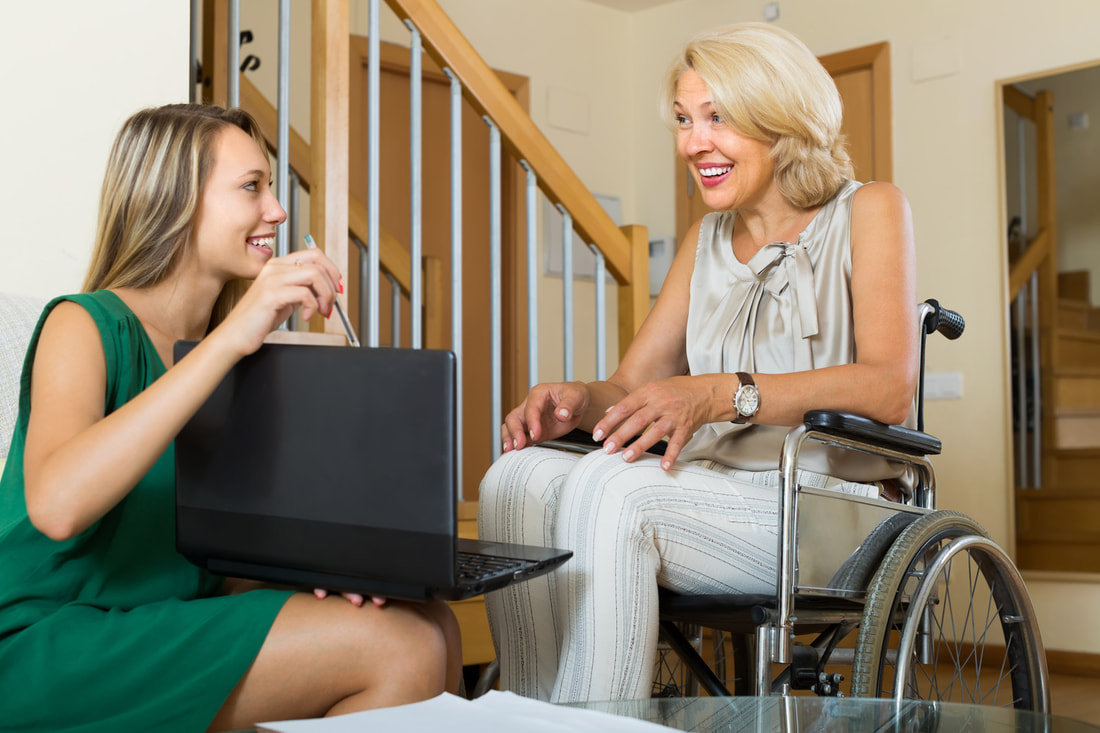|
By Kay Pascale
When you’re struggling with a chronic health condition, it’s not unusual to require the help of a caregiver. Many people prefer that this kind of caregiving take place in their homes instead of staying in a health center, hospital, or rehabilitation clinic. It’s important that at-home caregivers understand the challenges they are likely to face, as well as some of the steps they can take to make the process a bit easier. With that in mind, here are five tips to make at-home caregiving a little bit easier.
1. Have a Home Assessment
The first step to take when preparing to care for a loved one at home is to have a home assessment performed. These assessments are done by a physical therapist, an occupational therapist, a geriatric care manager, or another specialist focusing on the area of at-home caregiving and aging in place. They can help look at the home with an objective eye and give you tips about how to best adjust the space while pointing out hazards you might not have recognized. 2. Renovate the Bathroom The bathroom can be a particularly dangerous area while performing caregiving duties. It’s full of slick surfaces and hard corners that make falling seem like an inevitability and increase the likelihood of injury. There are some simple adjustments you can make to help seniors feel safer and more comfortable in the bathroom. Investing in a bathtub transfer bench, for example, and installing safety bars and safety strips in the tub or shower as well as near the toilet is a great step to take. 3. Remove Fall Hazards One of the most common causes of serious injury in the elderly is via slips and falls. It becomes more difficult to navigate the world as limbs become a bit stiffer and balance is thrown off. According to House Method, removing any mats and rugs that could pose a potential slipping hazard is just one method that can help keep your loved one safe. You’ll also want to remove any clutter that could be blocking doorways or hallways to prevent a fall. 4. Add Lighting Your current space might seem perfectly well-lit in your eyes, but keep in mind that we tend to need a bit more light as we age. Installing more lights, especially in hallways, stairwells, and closets, can help keep your loved one from stumbling and falling. Additionally, caregiving isn’t a job that adheres to a normal nine to five schedule. If your charge needs you at 3AM, wouldn’t it be better to have plenty of light to help you find your way to their door quickly? 5. Outline Hazards Finally, you might consider adding some colored or reflective tape around hazards. Even with plenty of light, spotting neutral-colored furniture can be tricky. Adding colored tape around the perimeter of the coffee table or chair could help keep your loved one from running into them and injuring themselves, which, in turn, saves you from dealing with a potentially serious medical emergency. If you’ve found yourself in a home caregiver position, keep these tips in mind to help make the process as smooth as possible. Author's Bio
Kay Pascale is a writer from Durham,NC. When she isn't writing about health and wellness, she enjoys practicing yoga, traveling, and reading.
1 Comment
|
AboutNews updates, tips, and guides on senior care, senior health, stress relief and a host of other caregiving related topics from the professionals at Ella Stewart Care. |



 RSS Feed
RSS Feed
